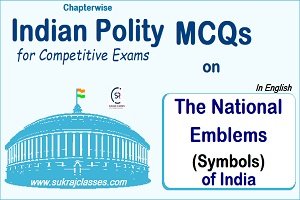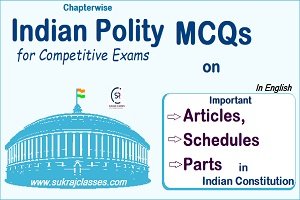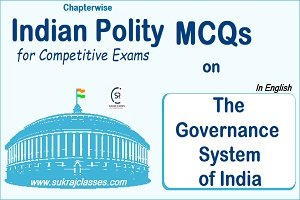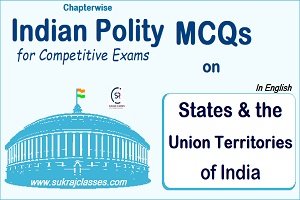
Indian Polity MCQs on ‘The National Emblems (Symbols) of India’
Indian Polity MCQs on ‘The National Emblems (Symbols) of India’, are important questions for all competitive exams i.e. UPSC, SSC, Railways, Banking, CET etc. Many questions were asked in pervious year’s exams from this topic. Let’s start the topic:
Que- 1. On which date was the National Emblem of India adopted?
(a) 26th January 1950
(b) 15th August 1947
(c) 26th January 1947
(d) 14th August 1950
Que- 2. From where the Emblem of India was adopted?
(a) Lion Capital of Ashoka at Sarnath
(b) Sanchi stupa
(c) Both (a) and (b)
(d) India’s national flag
Que- 3. What is the National Anthem of India?
(a) Satyamev Jayate
(b) Vande Mataram
(c) Jana Gana Mana
(d) Saare jahan se aacha
Que- 4. Who wrote the national anthem, “Jana Gana Mana.”?
(a) Bankim Chander Chatarji
(b) Prem Chand
(c) Jawaharlal Nehru
(d) Rabindranath Tagore
Que- 5. What is the national song of India?
(a) Vande Mataram
(b) Jana Gana Mana
(c) Saare Jahan Se aacha
(d) Satya meva Jayte.
Que- 6. When was the national song adopted?
(a) 26th January
(b) 20th January
(c) 24th August
(d) 24th January
Que- 7. A complete or formal rendition of national anthem takes…?
(a) 50 seconds
(b) 45 seconds
(c) 52 seconds
(d) 55 seconds
Que- 8. What is the name of Indian National flag?
(a) The Red and Green
(b) The Stars and Stripes
(c) Tricolour (Tiranga)
(d) Five-star Red flag
Que- 9. Who designed the National Flag of India? (a) Rabindranath Tagore (b) Bankim Chandra Chatterjee (c) Pingali Venkayya (d) Jawaharlal Nehru Que- 10. What is the ratio of the length to the width of the Indian national flag? (a) 3:4 (b) 4:3 (c) 2:3 (d) 3:2 Que- 11. When was the national flag adopted by the constituent assembly? (a) 22nd July 1947 (b) 26th January 1950 (c) 26th January 1948 (d) 15th August 1950 Que- 12. What does the wheel in the ‘Indian National Flag’ symbolize? (a) Freedom (b) Justice (c) Equality (d) Brotherhood Que- 13. The total number of spokes in the National Flag of India is….? (a) 20 (b) 24 (c) 26 (d) 30 Que- 14. Which statement is not true about India’s National Flag? (a) The ratio of the length and width of the flag is 2: 3 (b) There is a ‘Charkha’ in the middle of the white strip, which is a symbol of progress and mobility (c) The “Charkha” between the flag is taken from the Ashok Chakra (d) The diameter of “Charkha” is approximately three-fourth of the width of the white strip of the flag Que- 15. Who said this statement; “A flag is not only a symbol of our independence but also the freedoms of all people.” (a) Jawaharlal Nehru (b) Mahatma Gandhi (c) Sardar Vallabh Bhai Patel (d) Dr. Bhim Rao Ambedkar Indian Polity MCQs on ‘The National Emblems (Symbols) of India’





